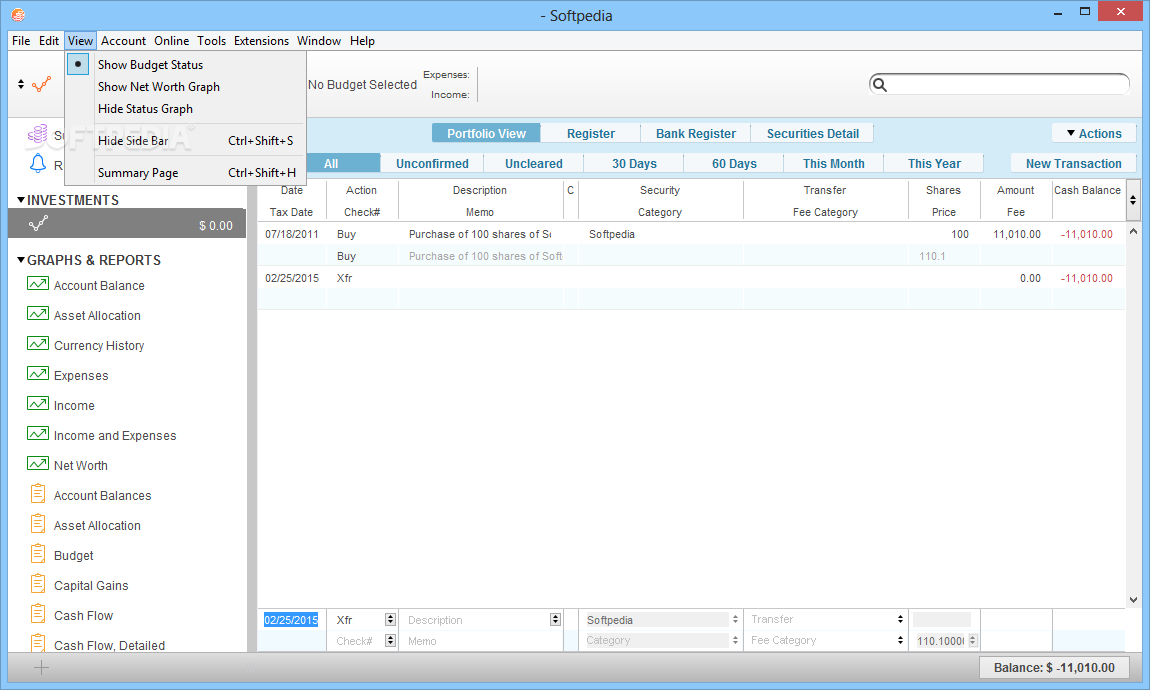

Two, jython is based on a hideously old python (2.1? Srsly?). One, the console is extremely primitive (especially if you’re used to working in, say, ipython notebook). The python interface, as it turns out, is a jython console. So I installed the python extension, and got to work. The bad news was, I had let my copy of Moneydance get old, and now most of the plugins (notably, the CSV plugins) didn’t seem to work anymore.
#MONEYDANCE MAC PYTHON SCRIPTING EXTENSION PDF#
The good news was, given the PDF statements and a moderate amount of elbow grease (mainly emacs macros), I could eventually wrangle the entries into a CSV format.

So I had 3 gaping holes in my transaction data. It has this tendency to stop giving me access to my transactions after 90 days (meaning I have to remember to download things). I’ve been very happy with it in the interim. Sure, Java-based was a strike (especially on a Mac, which goes out of its way to be Java-hostile), but given that the scripting access probably meant that I could get my data out of the tool, should I ever need to do so, I went for it. It caught my eye because it claimed to be double-entry (behind the scenes), and because it sported a developer API (and with python scripting). In that survey, I ran across Moneydance, a Java-based, double-entry, personal finance tool. From my quick survey, the personal finance software market was a wasteland, especially if you’re not willing to give access to your bank account to a web-app. After slogging it through with spreadsheets and double-entry for a few months, I went looking for a software option. ( finances, jython, Moneydance, python, software)Ī few years ago, I decided to start tracking my finances again. Adding Moneydance Transactions with Jython


 0 kommentar(er)
0 kommentar(er)
